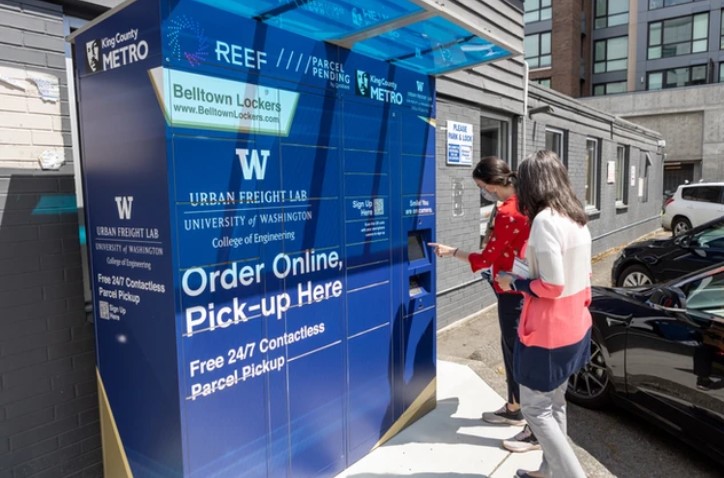
The Seattle Neighborhood Delivery Hub served as a testbed for innovative sustainable urban logistics strategies in 2021. Located in Seattle’s dense Uptown neighbourhood, it allowed providers to test and evaluate new technologies, vehicles, and delivery models — all in service of quickly getting to market new more fuel- and resource-efficient solutions, reducing emissions and congestion, and making our cities more liveable and sustainable.
The Hub initiative is an outcome of the Urban Freight Lab, which brings together private industry (such as retailers, carriers, parcel companies, tech companies, and the real estate sector), academic researchers, and public agencies.
The Lab’s focus is on designing and testing urban freight solutions against a backdrop of growing e-commerce delivery demand and rising transportation emissions. This means making logistics operations more efficient, cities more liveable, while achieving other goals such as improving equity and safety.
“The idea was to create a solution that reduces the amount of internal combustion travel in neighbourhoods, while still providing a competitive solution for businesses and an appealing solution for residents,” explains Dr Anne Goodchild, Director of the Urban Freight Lab at the University of Washington.
The Hub provided locals with access to neighbourhood-friendly delivery modes.
“We could describe this as making neighbourhoods more pleasant, and there’s a lot packed into that, including carbon emissions, congestion, and safety,” says Dr Goodchild. “We’re also adapting to the different ways people shop and access goods.”
Located in a dense, walkable neighbourhood, the Hub brought together parcel lockers, cargo bikes for residential last mile delivery, route optimisation software, electric pallets, mobile data collection, food preparation and delivery, and sensing devices to collect data.
“We measured the impact on miles travelled, emissions, and what residents thought,” says Dr Goodchild.
As part of its Transportation Electrification Blueprint, the City of Seattle has set a goal of 30% of goods delivery to be via zero emission modes by 2023. The technologies and innovations deployed as part of the Seattle Neighborhood Delivery Hub fit in with that civic goal.
In coming issues of the Decarbonising Delivery newsletter, we will explore the different aspects of the Seattle Neighborhood Delivery Hub, the partners behind the project, and the results observed so far.
More: A Video Intro to the Seattle Neighborhood Delivery Hub